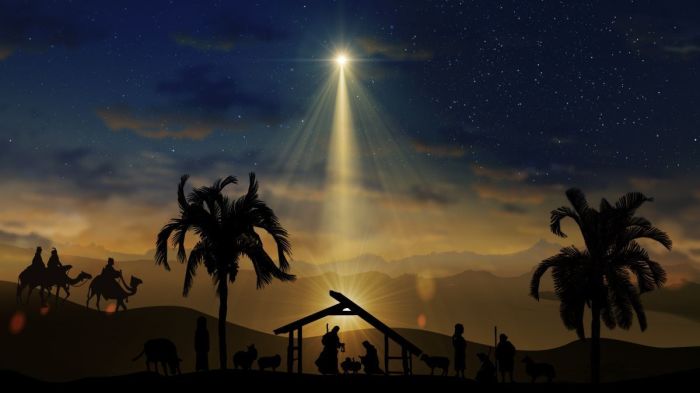What was the Star of Bethlehem that the wise men followed?

At Christmas, we remember the wise men who followed a star to Bethlehem. But what was the star?
The Christmas star
At Christmas time, people sometimes put a star on top of the Christmas tree. Christmas lights in shopping centers and towns often include stars. Christmas cards frequently show a star directly above a thatched stable in Bethlehem — often unrealistically close, creating what would surely be a fire hazard. In the carol "We Three Kings," people sing of "following yonder star."
The biblical account
The story of the Wise Men, also called Magi, following the Star of Bethlehem is found only once in the Bible, in Matthew 2:1–12. The origin of this story may well be directly from Mary, who remembered the events and "treasured them in her heart" (Luke 2:19, 2:51). Magi were wise men linked to royal courts, and they likely represented a king. In the Church calendar, they are commemorated at Epiphany.
The account does not tell us how many Magi there were, what their names were, nor what the star was, or how bright it was.
The star is mentioned twice, and the text implies the first sighting was at the time of Jesus's birth.
The Wise Men arrive in Jerusalem from the east (Matthew 2:1) and ask for the whereabouts of the child, saying, "For we have seen his star in the east, and are come to worship him" (Matthew 2:2). Herod then gathers his own Magi (Matthew 2:4), who quote Micah 5:2 to explain that the child will be born in Bethlehem (Matthew 2:5–6). Herod subsequently calls the Magi and "enquired of them diligently what time the star appeared" (Matthew 2:7), although the text does not specify if they gave him an answer. The Magi then travel to Bethlehem (Matthew 2:8), where they see the star again, which seems to point to the place where the child is (Matthew 2:9–10).
The early church father Irenaeus saw this event as a fulfillment of the Prophecy of Balaam, found in Numbers 24:17: "There shall come a Star out of Jacob, and a Sceptre shall rise out of Israel" (KJV), which many considered to be a Messianic prophecy.
Stars in the Bible
The book of Genesis describes how God created the sun, moon and stars, referred to as "lights of the sky" (Genesis 1:14–18). However, the Israelites were warned not to bow down and worship the stars (Deuteronomy 4:19).
The Jews believed that God had set the stars in their place (Psalm 8:3) and that "the heavens declare the glory of God" (Psalm 19:1–4). Psalm 147:4 states that God "numbers the stars and gives each one a name." Similarly, Isaiah 40:26 declares, "Lift up your eyes and look to the heavens: Who created all these? He who brings out the starry host one by one and calls forth each of them by name" (KJV).
The constellations of the Bear (called Arcturus in the KJV), Orion, and the Pleiades (called the Seven Stars in the KJV) are mentioned in Job 9:9, Job 38:31–32, and Amos 5:8. For the Jews, worshipping the stars was forbidden, but recognizing signs in the heavens was common. Even Jesus says, "There will be signs in the sun, moon, and stars" (Luke 21:25).
What does the text mean by 'star'?
In ancient times, people were more familiar with the stars. Their view of the night sky was unobstructed by light pollution from streetlights, cars and buildings. When traveling by donkey, horse or camel, their view was not blocked by car roofs or train ceilings. Stars were used for navigation and illumination. People would have known the names of the stars and constellations, attributing significance to their movements.
In modern English, we distinguish between stars, planets, moons, comets, asteroids, meteors and even dwarf planets. Yet, in ancient times, any shining object in the sky, except the sun and moon, was called a "star." What we now call planets were considered "wandering stars." In fact, our word "planet" comes from the Greek term for wandering star: planētes asteres.
Astronomy and the star of Bethlehem
The modern word "astronomy" derives from the Greek word for star, astron. Ancient astronomers meticulously tracked the movements of stars. The Babylonians had schools for stargazers, and cuneiform tablets document their observations. Ancient Chinese emperors also maintained stargazing staff, leading some researchers to examine Babylonian and Chinese records for clues about the Star of Bethlehem.
For example, Chinese records describe an object with a tail (possibly a comet) visible in the spring of 5 B.C. for 70 days. Some suggest this was a nova, while others propose it was a comet. Many believe Jesus was born around 5 B.C., making this event a candidate for the star.
Astronomical theories:
1. The Comet Theory
Early church father Origen suggested the Star of Bethlehem was a comet, a theory that remains popular. Comets are icy bodies that heat up near the sun, producing tails that point in a specific direction. Some speculate that Halley's Comet, visible in 12 B.C., was the star.
2. The Nova or Supernova Theory
A nova is a "new star," while a supernova occurs when a star collapses. These rare events are bright enough to be seen during the day, as Johannes Kepler observed in 1604.
3. The Conjunction Theory
Conjunctions occur when planets align. In 7 B.C., there were conjunctions of Jupiter and Saturn, and in 6 B.C., a triple conjunction involving Jupiter, Saturn and Mars. Some believe these alignments explain the Star of Bethlehem.
4. The Astrological Theory
In ancient times, astronomy and astrology were intertwined. Some suggest the Magi interpreted astrological signs, such as the alignment of planets in specific constellations, as heralding the birth of a Jewish king.
Conclusion
We may never know exactly what the Wise Men saw. However, the story aligns with what we know about ancient Magi and their interest in celestial events. Patrick Moore, the legendary British presenter of The Sky at Night, perhaps summarised it best: "Frankly, we just don't know!"
This article was originally published by Christian Today





























